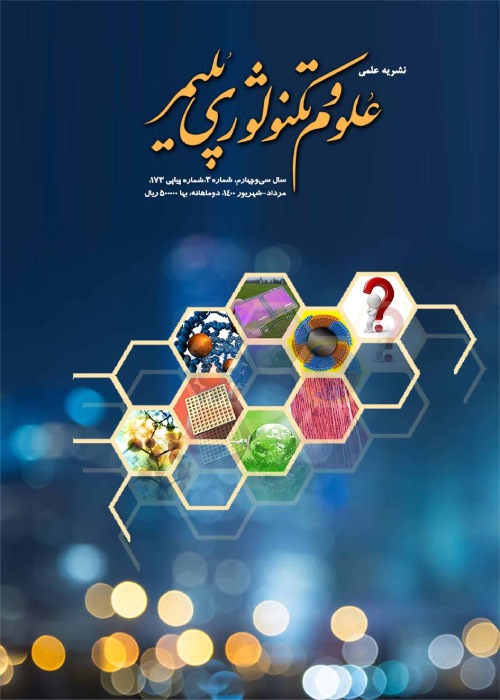A Comparative Study of CO2-Responsive Worm-like Micelles Prepared by Macromolecules and Small Molecules
Author(s):
Article Type:
Research/Original Article (دارای رتبه معتبر)
Abstract:
Hypothesis:
Worm-like micelles triggered by carbon dioxide (CO2), as an abundant, inert, and green stimulus have recently attracted much interest. These materials have many potential applications, including heat transfer, rheological control, personal protection and enhanced oil recovery (EOR). An ideal CO2-responsive worm-like micelle reveals a reversible transition state (from sol to gel state and vice versa) in response to environmental changes. The most important feature of these systems during these transitions is that CO2 does not accumulate in the system upon repeated cycles. Herein, we prepared two types of materials based on 3-(dimethylamino)-1-propylamine sodium dodecyl sulfate (DMAPA-SDS) as a small molecule, and poly(2-(dimethylamino)ethyl methacrylate-b-polymethyl mthacrylate)-SDS [(PDMAEMA-b-PMMA)-SDS] as a macromolecule to examine possible formation of CO2-responsive worm-like micelles.
Methods
Amine groups in the structure of DMAPA and PDMAEMA-b-PMMA can be protonated and ionized to quaternary ammonium salts by CO2 bubbling and interact with SDS to possibly form a worm-like micelle through non-covalent electrostatic attraction. The viscosity and structural features of aqueous solutions were evaluated before and after being exposed to CO2 by rheometry and 1H NMR, respectively. The rheometry results showed shear thinning and gel-like behaviors at high shear rates and frequencies, respectively.
Findings:
The results showed that for a DMAPA-SDS small molecule an ideal reversible CO2-responsive worm-like micelle was formed and a sol-to-gel transition was observed, whereas in using a macromolecule an irreversible agglomeration occurred. The absence of reversible sol-gel transitions and the presence of heavy agglomeration for the (PDMAEMA-b-PMMA)-SDS macromolecule was attributed to entanglements of its long polymer chains. Therefore, DMAPA-SDS as small molecule with its ideal CO2-responsive worm-like micelle has potential in different useful applications, particularly in EOR.Keywords:
Language:
Persian
Published:
Iranian Journal of Polymer Science and Technology, Volume:31 Issue: 3, 2018
Pages:
265 to 274
https://magiran.com/p1898297
دانلود و مطالعه متن این مقاله با یکی از روشهای زیر امکان پذیر است:
اشتراک شخصی
با عضویت و پرداخت آنلاین حق اشتراک یکساله به مبلغ 1,390,000ريال میتوانید 70 عنوان مطلب دانلود کنید!
اشتراک سازمانی
به کتابخانه دانشگاه یا محل کار خود پیشنهاد کنید تا اشتراک سازمانی این پایگاه را برای دسترسی نامحدود همه کاربران به متن مطالب تهیه نمایند!
توجه!
- حق عضویت دریافتی صرف حمایت از نشریات عضو و نگهداری، تکمیل و توسعه مگیران میشود.
- پرداخت حق اشتراک و دانلود مقالات اجازه بازنشر آن در سایر رسانههای چاپی و دیجیتال را به کاربر نمیدهد.
In order to view content subscription is required
Personal subscription
Subscribe magiran.com for 70 € euros via PayPal and download 70 articles during a year.
Organization subscription
Please contact us to subscribe your university or library for unlimited access!


